2012 Honda Civic Si Vs. 2012 MazdaSpeed3 [Video]

Unlike the Honda Civic Si’s dominance of the sport compact scene during the ‘80s and ‘90s, these days the more powerful and aggressively styled MazdaSpeed3 rules the front-drive roost (and the VW Golf GTI isn’t far behind). But with the introduction of the all-new 2012 Civic Si, Honda has a golden opportunity to strike back and reclaim the title as king of the FWD pocket rockets. To find out if Soichiro Honda would be grinning from ear to ear or frowning in disapproval, we brought the 9th generation Civic Si and the MazdaSpeed3 to Toronto Motorsports Park for a knockdown, drag ‘em out, head-to-head shootout where the only things that matter are acceleration, braking, and grip.
THE COMBATANTS
FAST FACTS
| 2012 Honda Civic Si Coupe |
| 1. 201-hp and 170 lb-ft out of its new 2.4L engine |
| 2. 22% more torque 800 rpm sooner |
| 3. MSRP starting at $22,205 |
| 2012 MazdaSpeed3 |
| 1. 263-hp and 280 lb-ft out of its turbocharged 2.3L engine |
| 2. MazdaSpeed suspension tuned at Laguna Seca and the Nurburgring |
| 3. MSRP starting at $23,700 |
With a whopping $5 between the two on price (our Civic Si coupe came equipped with the optional Navigation package and thus lists at $23,705 versus the Mazdaspeed3 at $23,700), your credit limit isn’t going to be the deciding factor here. Where these two front-drive performance cars differ the most is under the hood – the MazdaSpeed3 uses a 2.3-liter direct injection turbocharged engine to produce 263-hp at 5500 rpm and a stump-pulling 280 lb-ft at 3000 rpm, while the Civic Si generates 201-hp at 7000 rpm and 170 lb-ft at 4300 rpm thanks to its naturally aspirated 2.4-liter engine.
Although it may seem like Honda brought a knife to a gunfight given the horsepower and torque gap between it and the Mazda, in a world controlled by the laws of physics mass is also an important variable. With the Civic tipping the scales at a relatively svelte 2,877 lbs and the surprisingly hefty MS3 weighing in at 3,272 lbs, the playing field should be at least somewhat leveled, especially when you consider that weight not only affects acceleration but also braking and handling.
In terms of slowing all that mass down, getting it around corners, and putting power to the ground, there’s less to differentiate these two machines. Both use 6-speed manual transmissions, gear-type limited slip differentials, and MacPherson strut front and multi-link rear suspension layouts. Both also come equipped with upgraded braking systems and the usual stability and traction control systems (which we turned off during track testing since these always result in slower and less consistent lap times in dry conditions).
FIRST IMPRESSIONS
You only get one chance to make a first impression, and as I launch the new Civic Si coupe down the 1,500-ft long front straightaway at Toronto Motorsports Park, the extra torque of the 2.4-liter engine is immediately apparent, as is the 7,200-rpm fuel cutoff. An Si-badged Civic that doesn’t rev to 8000-rpm and scream like a banshee while doing it? Hmm. This will take some getting used to.
After a 4-3 downshift and a brief but determined stamp on the brake pedal, I pitch the car into the long right-hand Turn 1 at close to 90 mph. The Si’s initial response is a startling amount of body roll followed by a healthy dose of understeer. But hey, just about every production vehicle has some turn-in understeer designed into it as a safety precaution, and once the Si’s stiff chassis takes a set the front tires begin to find some grip. I’m back to full throttle as the inside tire clips the red-and-white curbing and that’s when the superb helical limited slip differential helps pull the Si out of what initially felt like a failed experiment in weight transfer and suspension tuning.
The MazdaSpeed3, by contrast, feels far more eager to turn into a corner and carve a parabolic arc that simultaneous induces a grin and preserves momentum. Body roll feels absent compared to the Honda, and the MS3 even exhibits a willingness to forego understeer in favor of a touch of trail braking-induced oversteer, especially through the tight and twisty esses of Turns 4 and 5.
And the power, oh the glorious turbocharged power! Although it runs out of steam rather suddenly around 6000 rpm, the 3000 rpm leading up to it deliver an “in your face, VTEC!” kick in the pants. The Torsen limited slip differential does a surprisingly good job of directing the gobs of torque to the wheel with the best chance of not converting all that energy into tire smoke, and although torque steer is an annoyance when punching the gas at cruising speeds, out on the racetrack it’s virtually undetectable.
THE DATA DOESN’T LIE…
Having equipped both cars with a Vbox data acquisition system (which uses both GPS and accelerometer data to record lap times as well as other useful bits of information like longitudinal and lateral g-forces, yaw rate and vehicle speed), lets forget the seat-of-the-pants stuff for a minute and take a good hard look at the numbers.
| 2012 Honda Civic Si | 2012 MazdaSpeed3 | |
| Best Lap Time | 1:28.5 | 1:26.4 |
| Top Speed (front straight) | 94.45 mph | 100.03 mph |
| Max cornering g-force | 1.02g | 1.08g |
| Max braking g-force | -0.89g | -0.96g |
Numerically that’s a pretty solid smackdown in favor of the Mazda, but lets take a closer look at the data to see where that 2.1-second lap time differential really comes from. Breaking the circuit down into 3 equal length segments – from the start/finish line halfway down the front straight to Turn 3 as Segment 1, Turn 3 to just before the Turn 7 chicane as Segment 2, and then Turn 7 through to the start/finish line as segment 3 – will help us sort things out in finer detail.
The first segment is all about power and threshold braking since Turn 1 and Turn 2 are preceded by long straights, though Turn 1 does test a car’s turn-in response, mid-corner balance, and power-on corner exit ability very nicely too. As you can see from the close-up of the speed (black line for the MS3, blue line for the Si) and lateral or cornering g-force (green line for the MS3, red line for the Si) data traces for this segment, the MazdaSpeed3 does pull away at the end of each straightaway, but the Civic Si does a very good job of accelerating out of Turn 1 despite carrying a little less speed through it. As a result the MS3 is only 2 mph faster down the back straight going into Turn 2, where once again the Mazda manages to carry a bit more speed and slightly higher cornering g’s through the turn. Still, the Mazda is only 0.3-seconds quicker than the Honda through this segment.
In the second segment, from Turn 3 to Turn 7a and b (a virtually irrelevant chicane near the end of the middle straightaway that you can straight-line through just before braking hard for the tight left-hand Turn 8), the acceleration advantage of the MazdaSpeed3 is more apparent. With an extra 110 lb-ft of torque, the MS3 really jumps out of slower sections like the esses (turns 4 and 5) and Turn 6 (onto the middle straight). The Honda hangs tough in the corners, where speeds and lateral g-forces are very close to the Mazda’s, but thanks to all those torques the MS3 pulls a 0.8-second gap over the Civic Si here.
In the final segment, from Turn 7 to the start/finish line, we again see the MazdaSpeed3 demonstrating its power advantage, especially coming out of the last corner onto the front straight. Surprisingly (given its soft suspension), it’s the Civic Si that carries the higher cornering speeds though Turns 8, 10 and 11. Had our Si test mule been equipped with the optional Michelin summer tires, the Mazda’s cornering advantage elsewhere on the track might have been completely negated as well, but as it stands the Mazda was able to get on the power much sooner coming out of the final corner onto the long front straight, translating to a 1-second advantage in this segment of the track.
BUT IT DOESN’T TELL THE WHOLE STORY
To put the Mazda’s speed advantage into context, when it crosses the finish line the Honda is 227-feet behind. That’s a lot of feet, but what the data doesn’t tell you is how these cars feel when pushed to the limit. And lets face it, for most buyers it’s that sporty car feel that matters most, since very few will ever venture out onto a racetrack.
It’s in the feel department where the Honda is a bit of an enigma. Although the data shows that it gets through the corners almost as quickly as the Mazda, because of excessive body roll and a softly tuned suspension, the Civic Si feels like the heavier machine despite being almost 400 lbs lighter.
And then there’s the Si’s engine. Sure, it’s efficient and impressively powerful for a naturally aspirated 4-banger, but it’s no screamer either. Honda used to brag about meeting or exceeding the 100-hp/L mark with its performance-oriented models (the ’99-’00 Civic SiR making 160-hp out of 1.6-liters, for example), so 201-hp out of 2.4-liters simply doesn’t live up to the company’s standards, nor will it cut it against more powerful machines like the MazdaSpeed3.
Now, if Honda had the vision to give the Civic Si 240-hp – hitting that magical 100-hp/L mark – all of a sudden the Mazdspeed3’s power-to-weight advantage (12.44 lbs per horsepower compared to the Si’s 14.31 lbs per horsepower) would be flipped in favor of the Honda. And as an added bonus, this 240-hp mark would no doubt be reached in part by allowing the engine to rev more, giving the Si some of its boy-racer character back. Tighten up the suspension tuning and there’d be a lot less talk about the Si’s cheap interior plastics or cluttered instrument panel.
Meanwhile, Mazda has lived up to its “Zoom Zoom” credo by tuning the MazdaSpeed3 in a way that makes it feel athletic and rowdy. It’s the kind of fun a sport compact car should be – boldly styled yet very practical in its 5-door hatchback configuration, suspension tuning that encourages you to terrorize on-ramps and twisty country roads, and an engine that delivers power in a way that makes it feel faster than it really is (and it’s plenty fast).
The only flaw in the Mazdaspeed3’s otherwise compelling mix of performance and practicality is the lack of feedback from the brake pedal. When stomping hard on the binders out on the race track, the slow pedal has a decidedly wooden feel to it, though Mazda claims they’ve improved braking feel compared to the 2010 model (in which case it’s brake pedal must have felt like petrified wood).
THE VERDICT
So the MazdaSpeed3 wins around the racetrack and in the fun-to-drive category too. I’ll take mine in the same pearl white color as the test mule, at least until Honda reconnects with it’s go-fast heritage and turns their last remaining performance model into the 100-hp/L screamer it should be.
Related Reading
2012 Honda Civic Si Review [Video]
2011 MazdaSpeed3 Review
2012 Volkswagen GTI: First Drive
2012 Honda Civic Si, 2012 MazdaSpeed3
LOVE IT
- Super slick transmission and magical limited slip differential
- Stiff and responsive chassis
- Great mid-range torque from its 2.4L engine
- Gobs of torque and oodles of horsepower
- Sporty feeling suspension tuning and steering
- 5-door hatchback practicality
LEAVE IT
- Softly sprung and too much body roll
- 7200 rpm redline means that boy-racer feeling is missing
- Not enough horsepower to compete for the FWD sport compact crown
- Lack of pedal feel when threshold braking
- Runs out of steam over 6000 rpm
- Front grille styling will scare away some buyers

Some say he's closely related to Bigfoot and that he's a former Canadian Touring Car Champion. All we know is he's the AutoGuide Stig! A thesis defense away from being your intellectual superior he's a professor of vehicle handling dynamics. The part-time touring car and time attack racer is faster (much faster) than your average auto journalist.
More by Dave Pratte

















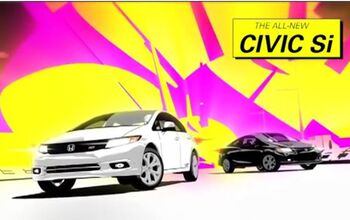
![2012 Honda Civic Si Review [video]](https://cdn-fastly.autoguide.com/media/2023/06/26/06105/2012-honda-civic-si-review-video.jpg?size=350x220)




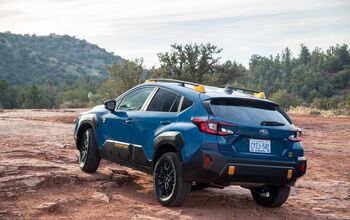
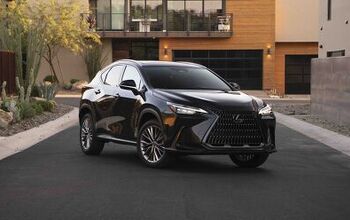



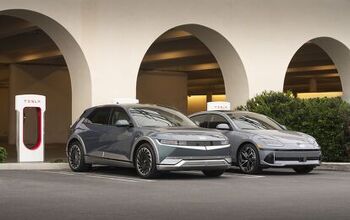
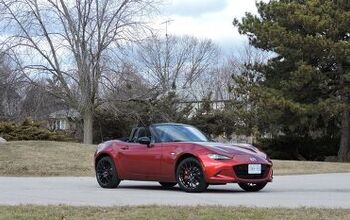

Comments
Join the conversation